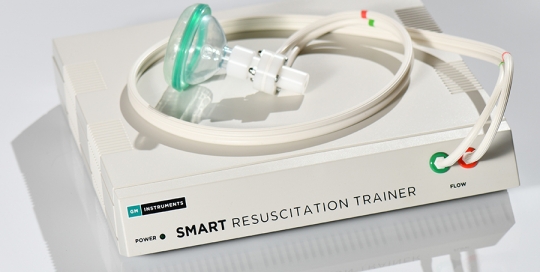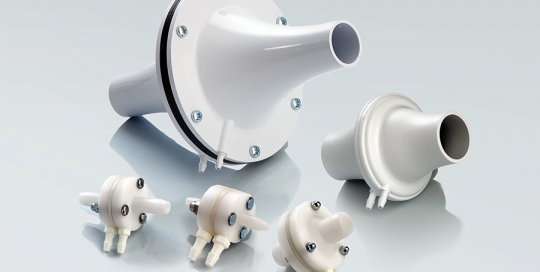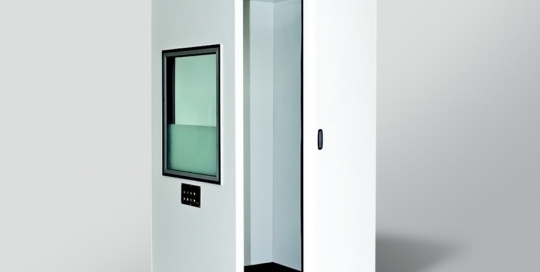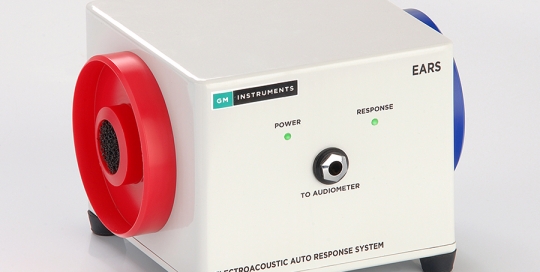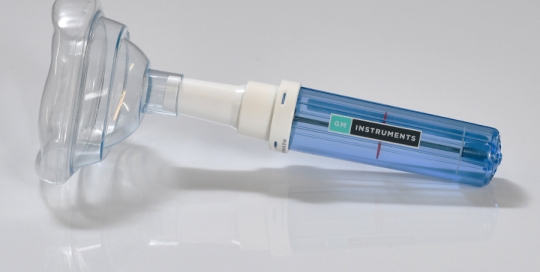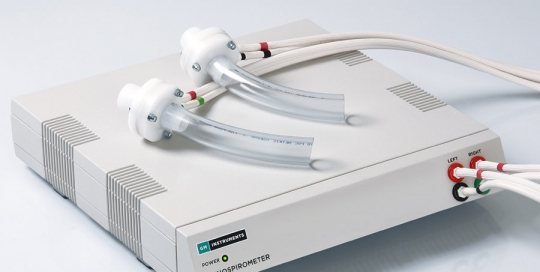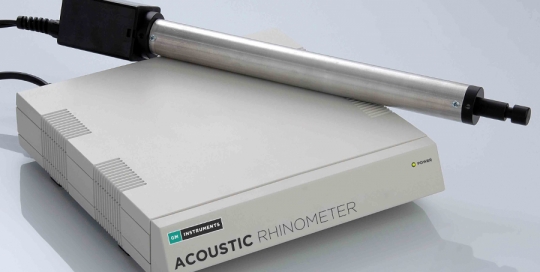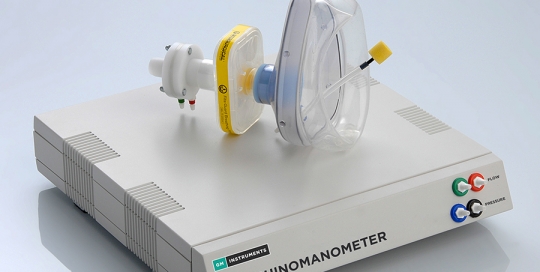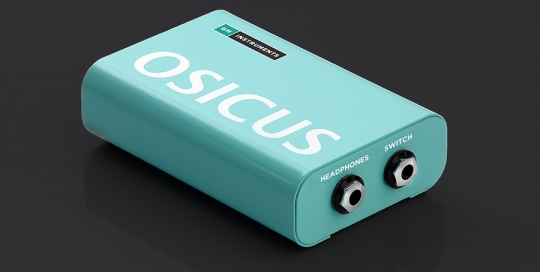The SMART Resuscitation Mask Leak Trainer device was designed to help individuals who may be called upon to resuscitate babies or young children, to assist in learning or improving mask ventilation technique. SMART stands for Standardised Measurement of Airway Resuscitation Training. This training device forms part of the UK Resuscitation Council’s Advanced Resuscitation of the Newborn Infant (ARNI) course, and can also be used for ongoing practice, for self or observed certification, or for research purposes.
Respiratory Flowheads
Connor Evans2024-05-28T08:08:40+00:00Our range of Respiratory Flowheads (Pneumotachographs) have been designed to cover gas flows appropriate to monitor respiration of mice through to small ponies and everything in between. There are 5 heads in the range, and each has been designed to give a linear flow/pressure relationship within the flow rates expected. The differential pressures generated by each head at its rated maximum linear flow are broadly similar and lie within the range of +/- 20 mm H2O
Audiometer Booths
Connor Evans2024-05-24T16:12:36+00:00Single Occupancy booths providing a controlled acoustic environment for efficient hearing screening. The ideal environment to carry out hearing screening tests, whether it is at a healthcare practice or annual employee evaluation testing for industry. These audiometer booths includes a range of useful features including a moulded internal seat and double glazed window. Available in two options, the standard (250) and oversized (350) booths depending on your requirements.
Electroacoustic Auto Response System
Connor Evans2024-05-17T11:56:41+00:00The Electroacoustic Auto Response System (EARS) offers a quick and convenient method for verifying the performance of an audiometer and its response button before conducting tests on subjects. Ensures that audiometers are functioning correctly by providing precise and reliable responses to auditory tones. This system is capable of delivering accurate threshold measurements across a wide frequency range, 500Hz to 8000Hz, which encompasses the critical frequencies for hearing. EARS helps audiologists confirm that the equipment is calibrated correctly and performing optimally. Enhancing the reliability of hearing tests and ensuring that the results obtained are valid and reproducible.
Peak Nasal Inspiratory Flow Meter
Connor Evans2024-05-28T09:52:08+00:00Our Peak Nasal Inspiratory Flow (PNIF) Meter is lightweight, compact and a simple way to inspect the patency of a patients nose. Measurements can be generated from a single inspiratory manoeuvre using both nostrils simultaneously, or by using each nostril in turn, to provide a simple indication of obstruction, although care must be taken due to variability in subject efforts, and the possible effect of nasal valve collapse.
NV2 Rhinospirometer
Connor Evans2024-05-17T11:37:57+00:00The NV2 Rhinospirometer is an advanced, stand-alone medical device designed for detailed analysis of nasal airflow. It precisely measures the distribution of airflow between the two nasal passages, offering critical data for diagnosing and treating various nasal and respiratory conditions. By providing a Nasal Partitioning Ratio (NPR), the device enables healthcare professionals to assess the balance of airflow through each nostril. This information is crucial for identifying obstructions, deviations, or other anomalies within the nasal passages, thus facilitating more accurate and effective treatment plans. The NV2 Rhinospirometer's user-friendly interface and reliable performance make it an essential tool in both clinical settings and research environments.
A1 Acoustic Rhinometer
Connor Evans2025-09-08T10:10:59+00:00Acoustic Rhinometers allow a very rapid non invasive examination of the nasal cavity using a sound pulse technique. Acoustic Rhinometry was developed originally during a joint collaborative project between the Universities of Aarhus (Denmark) and Boston (USA). GM Instruments was invited to commercialise the system, and has been actively working with interested parties to update and improve the measurement since then. A Rhinometer quantifies nasal structure and measures this in terms of absolute levels and the effect of interventions, thus allowing % change to be recorded.
NR6 Rhinomanometer
Connor Evans2025-08-29T09:44:21+00:00Rhinomanometry records nasal function and has been available to clinicians for many years. Recent developments have included visual guidance to suggest whether airway resistance results achieved lie between normal and severely obstructed bands, therefore assisting in diagnosing nasal conditions and allergic responses. The recent addition of so called four-phase measurements, which include Vertex and Effective resistance values, correlate well with the subject’s impression of blockage.
ASRA Curve Audiometer
Connor Evans2025-08-12T08:44:52+00:00The Asra Curve performs air conduction screening, backed up with additional software to perform tasks such as annual statistics and recall lists. Designed to build on the reputation of the Asra Classic, the Asra Curve offers many of the same unique features but combines the latest electronics with a smaller product to better fit current healthcare environments. Unique to the Curve is the ability to quickly swap headsets (and calibration) and to easily move the unit between PC’s. It comes complete with a noise reduction headset, all cables, testing and batch utility analysis software, and a manufacturer’s calibration certificate.
ASRA Osicus Audiometer
Connor Evans2025-02-05T15:45:42+00:00Designed to be a lightweight, small but robust screening instrument, ideal for Occupational Health Nurses or Technicians on the move, it provides the testing capability required for workplace industrial screening. The recorded files are generated in the same file format as the ASRA Classic and ASRA Curve audiometers and as such can be interchanged for storage and/or comparison purposes. Printouts are produced in full A4 size for ease of assessment, and long term stability and can be saved in pdf format. Osicus offers a unique additional feature, as a comparison between current and previous audiogram for an individual can be generated to predict potential future hearing degradation unless the rate of loss is reduced, normally by a change in exposure.
